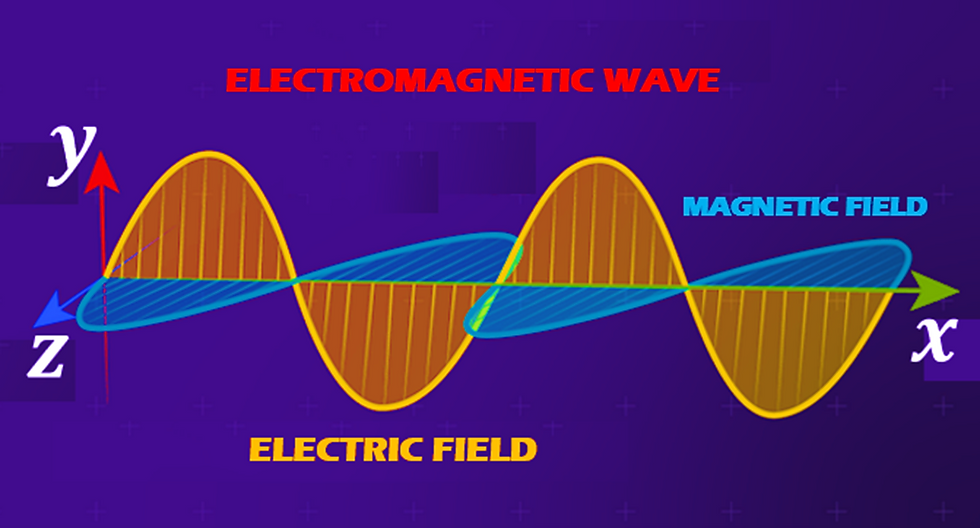Why Gamma Rays Obey the Inverse Square Law, but Alpha and Beta Don’t
- bpsinghamu
- Apr 14, 2025
- 4 min read
Have you ever stopped to wonder why gamma radiation follows the inverse square law, while alpha and beta radiation behave so differently? This question taps into the heart of radiation physics, and the answer is as intriguing as it is educational. Let’s dive into it.

Gamma rays are electromagnetic waves—just like visible light, X-rays, or microwaves. The gamma rays interact differently with matter compared to alpha and beta particles. Gamma photons lose energy through discrete interactions like photoelectric absorption, Compton scattering, or pair production, often occurring as a single-step event—they either pass through or get absorbed or scattered at once. This behavior allows gamma rays to retain their wave-like spreading pattern over long distances, making the inverse square law valid.
Being waves, they travel in straight lines and spread out uniformly from their point of origin. This spreading takes the form of spherical wavefronts. It means the energy of the gamma rays gets distributed over a spherical surface area that increases with the square of the distance from the source.

Mathematically, this is expressed through the surface area of a sphere: 4πr². So, if the distance from the source doubles, the area over which the radiation spreads becomes four times greater. As a result, the intensity of gamma radiation decreases proportionally, following the relation: Intensity ∝ 1 / r².

This is what we call the inverse square law. In practical terms, if a detector reads 1000 counts per minute at a distance of 1 meter from a gamma source, it will only read around 250 counts per minute at 2 meters. Gamma rays and charged particles obey very different absorption laws. For gamma rays, the intensity drops exponentially as it travels through matter.

This is described by the law:
I=Io exp(-μx)
Where μ is the material’s absorption coefficient."
Now, what about alpha and beta radiation? These are not waves—they’re particles. Alpha particles are heavy, positively charged helium nuclei, and beta particles are high-speed electrons or positrons. Unlike gamma rays, alpha and beta particles do not spread out freely in space. Instead, they interact strongly and continuously with matter.

As they travel, they collide with atoms, losing energy bit by bit through ionization and excitation processes. This kind of interaction is gradual and cumulative, unlike the more discrete interactions seen in gamma radiation. Because of this, alpha and beta particles have a very limited range in air and are easily absorbed by even thin layers of material.

A sheet of paper can block alpha particles, and a few millimeters of aluminum can stop beta particles. They don’t travel far enough to exhibit the free-space spreading behavior that the inverse square law is based on.

Gamma rays, on the other hand, can travel much farther and are only occasionally absorbed or scattered by matter. When they do interact, they do so through three primary discrete processes: photoelectric absorption, Compton scattering, and pair production. In photoelectric absorption, the gamma photon is completely absorbed by an atomic electron, which is then ejected from the atom. This process is more probable at lower photon energies (below a few hundred keV) and in high atomic number (Z) materials.
In Compton scattering, the gamma photon collides with a loosely bound or free electron and is deflected from its original path, transferring some of its energy to the electron. This is the dominant interaction in the intermediate energy range—roughly from a few hundred keV up to a few MeV.

In pair production, which occurs in the presence of the field of an atomic nucleus, the gamma photon transforms into an electron-positron pair. However, this process only occurs if the gamma photon has sufficient energy—at least 1.022 MeV, which is equivalent to the combined rest mass energy of an electron (0.511 MeV) and a positron (0.511 MeV). Any energy beyond 1.022 MeV is shared as kinetic energy between the electron and positron. This process becomes significant at higher energies, typically above several MeV.
These gamma interactions—especially because they occur in isolated, probabilistic steps—allow gamma photons to continue spreading in space like waves. This preservation of wave behavior in free space underpins why gamma radiation obeys the inverse square law, while particle radiation does not.
To understand this in real-world terms, consider a hospital or laboratory setting. Place a gamma detector 1 meter from a gamma source and you might get 1000 counts per minute. Move the detector to 2 meters and the count drops to 250—a textbook example of the inverse square law. Try the same with an alpha source, and even moving the detector just 10 centimeters away—or blocking it with a thin sheet—can result in zero counts. Not because the alpha particles spread out, but because they are absorbed before they can even reach the detector.
Take Away: Gamma rays are electromagnetic waves that spread out with distance and follow the inverse square law, thanks to their wave nature and relatively rare interactions with matter through processes like photoelectric effect, Compton scattering, and pair production—each occurring based on energy thresholds and material properties. On the othet hand, alpha and beta particles are massive and charged, losing energy continuously through ionization and excitation, which restricts their range and prevents them from exhibiting inverse square behavior. Understanding these differences is not just an academic exercise—it’s essential for professionals in nuclear science, radiation safety, and medical physics.
If you found this explanation helpful and want more atomic insights, don’t forget to check out my YouTube channel—BPS The Atomic Explorer—where we make nuclear physics clear and exciting. Like, share, and subscribe to stay tuned for more!


Comments